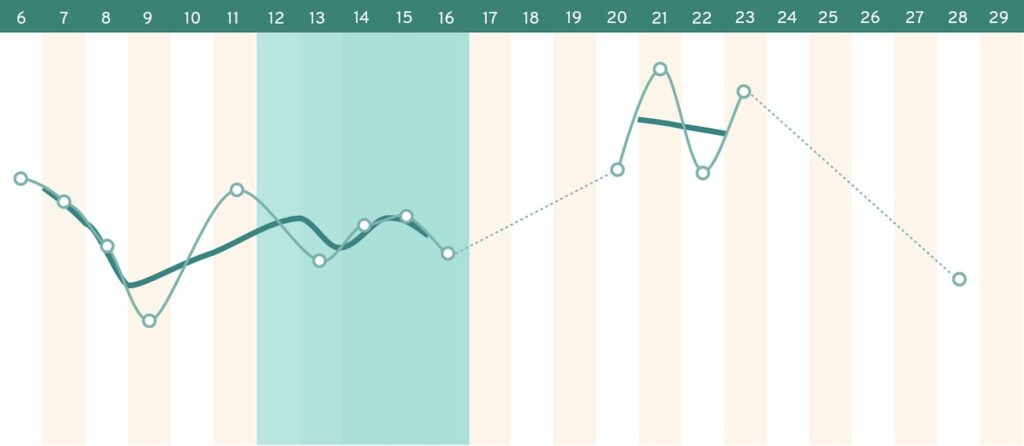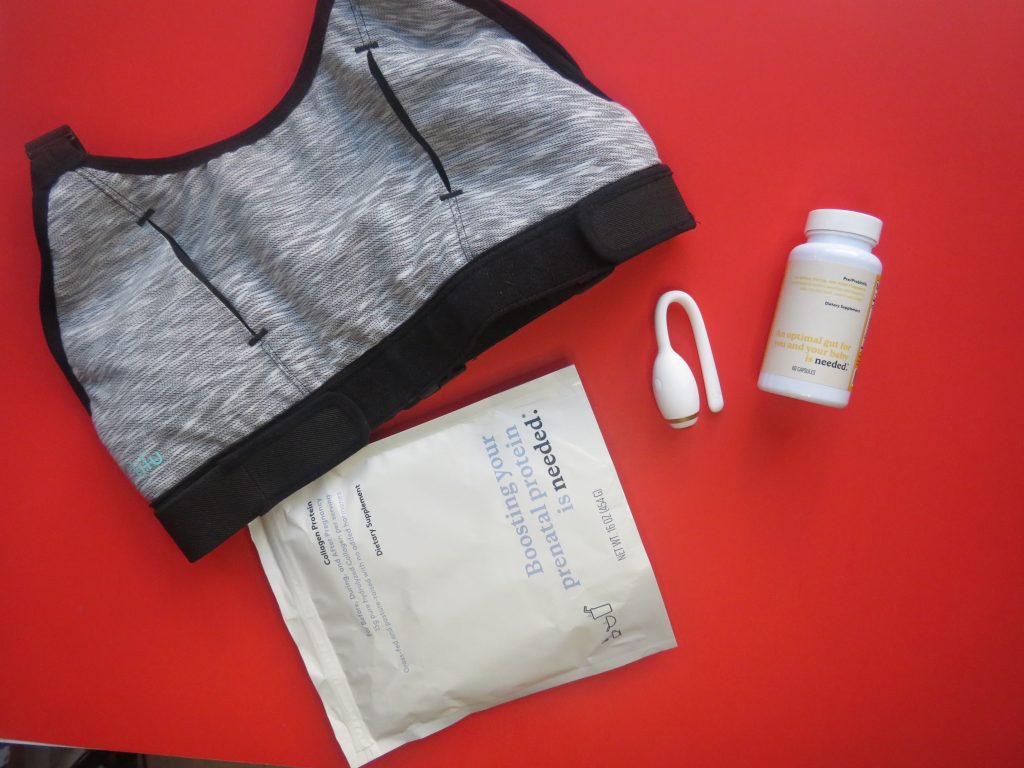Infertility can be considered “primary” or “secondary.” Primary infertility is described as the inability to conceive within 1 year of trying, or within 6 months if 35 years of age or older. A woman is said to have secondary infertility if she struggles to conceive but has had at least one pregnancy previously. Many of our users suffer from both primary and secondary infertility. Fifty percent of our kegg users who are currently trying to conceive are seeking their first baby while the other half trying to conceive already have at least one child.
While conceiving the first child (or children) may have been “easy”, many mothers struggle to conceive another child. Just like primary infertility, secondary infertility can occur due to a problem at any point in the natural process required to become pregnant. A woman’s fertility can even change after the birth of a child, but many women are not aware of this. For example, a new diagnosis of hypothyroidism or PCOS can be diagnosed after the first child.
Infertility may be caused by a number of different factors. When cycles are not consistently regular, identifying the fertile window can be even more challenging and add more stress to the already difficult fertility journey.
One of our pregnant mamas, JK, a first-time mom, struggled to understand her cervical mucus patterns. We hear this commonly, whether it is due to limited cervical mucus that makes tracking challenging or difficulty differentiating between the various mucus types. Other users report they simply don’t want to have to track their mucus so closely. Fortunately, kegg objectively tracks the electrolytes present in the cervical fluid, eliminating the need to spend the time and effort attempting to read your cervical mucus. The electrolytes present in the cervical fluid correspond to the shifting hormones which occur during the cycle. As a result, kegg plots data points that help women, like our kegg mamas, understand their cycle in a convenient and reliable way.
As you will read below in AC’s story, kegg helped her identify that her fertile window had arrived a week early when she would otherwise have not suspected she was nearing ovulation. With these helpful kegg insights, AC would have likely missed her window of conception for the month.
Let’s get to their stories.

Our user JK shared “I was one of the original backers of kegg. I bought it because I felt unsure of what my CM (cervical mucus) observations were telling me. I have loved being able to track my CM through the app, giving me more accurate information on what my cycle was actually doing. I used kegg for seven cycles and was able to pinpoint my window of fertility. After 5 months of TTC, I’m happy to say that we have a Successful pregnancy kegglet on the way!”
This kegg user shared both her kegg chart and temperatures for comparison, though extra charting is not necessary when using kegg. Looking at her kegg chart, kegg correctly identified her fertile window in green. Some users have dramatic “dips” or “valleys” during their fertile windows while others have more subtle shifts, like this one. This user most likely ovulated between cycle day 14 and 15. Sadly, the user didn’t use kegg on day 14th, which likely would have been the lowest value of her fertile window. The user didn’t use kegg on day 14th but You can still appreciate the large shift on cycle day 15 which typically indicates the transition to progesterone production which occurs after ovulation. As you can see, she experiences some lower readings in the luteal phase (or phase post ovulation) which is common. Her temperatures remain elevated.
*Of note, some changes to font and display settings on your device may impact your kegg chart display. Our team is happy to help you investigate this if you are struggling to see shifts in your chart!

AC also has an exciting journey to share. She writes “In 2016, after getting married and discussing our goals for 6 months, I got my IUD removed. I had a baby 5 years prior, no planning required, I was assured my cycle could take a few months to straighten itself out and then my fertility would return… 2 years and many, many tries later, all the tests were scheduled and finally we conceived… only to have the worst heartbreak. It was around that time when I had seen an ad for kegg on Facebook. I clicked, read up on it, and joined the Facebook group. This was before the Indiegogo [start-up campaign] took place, however, they had finished recruiting new testers a few weeks before I joined the group.. shucks.
So I hung around. Told my husband all about the kegg and the information they had made available to the public. He told me “cool, get it” As soon as Indiegogo launched, we placed our order. A few weeks, or months later (it’s been awhile🤷🏼♀️) we found out we were, again pregnant, after months of trying after our MC.
By the time kegg was shipped, I had a 6-month old and wasn’t wanting another one for a while. So I used my kegg to keep track of my cycle. Gaining insight that I had never had before, even being connected to fertility awareness family planning coaches from members of the kegg team on Facebook. I used kegg for what it’s unapproved for -le gasp- by using it to avoid pregnancy.
A few months ago, laying in bed with my husband after finally getting our then 16 month old to sleep, and I said to him I wanted another. We discussed how old the 16-month-old would be, and decided it was a good time to start trying again. So I applied the knowledge I had gained and became more vigilant with my use of my kegg, and in the beginning of November, I ovulated nearly a week before my predicted ovulation window! But kegg caught it, we tried… and we have our first ultrasound tomorrow morning!
If it weren’t for kegg, I wouldn’t have known I was ovulating early, I wouldn’t have conceived this baby, and I’d still be struggling with my fertility.
The kegg team has always been super helpful and transparent, especially with glitches and fixes in the app when it was first released. Most of which I never even noticed. But it’s very nice to know they are constantly working to perfect their product. Can’t wait to see what’s to come.”
As you can see, AC typically ovulates a week later, kegg placed her predicted fertile window on cycle days 12-16 based on her previous cycle trends. However, in this cycle, she happened to ovulate earlier! AC was able to catch this as she noticed a peak followed by a dip. Thanks to the real-time feedback offered by kegg, AC was able to not miss this fertile window, and as a result is expecting a baby!
How did AC know she was in the fertile window earlier than predicted? Having used kegg for previous cycles, she knew to look for a valley (or dip). From cycle day 6 through 9 AC experiences a decline in values. She recognized that this looked similar to her fertile windows in previous cycles. As a result, she suspected she was approaching ovulation and was in her window of opportunity for timing intercourse.
Are you expecting a kegglet? We would love to hear your story. Sharing stories like these help us our users who are trying to conceive. Trying to conceive can be isolating and challenging. Inspirational stories like these offer other keggsters hope!

To show our appreciation for being a member of our kegg community and sharing your story, mamas who conceive with kegg can receive a special gift. Currently, we are offering an Owlet Smart Sock, a Wearlilu breastfeeding massage bra, or prenatal nutritional support from needed to help you on your pregnancy journey.
Join our supportive group of keggsters on Facebook.
Do you have questions about your chart or using kegg? We are here to help! Email us at hello@kegg.tech
